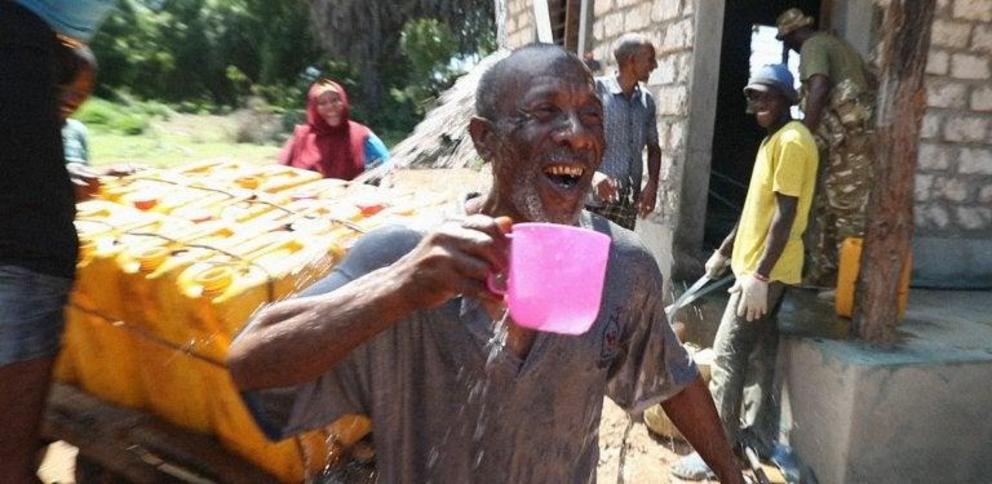Kenya installed this solar plant that transforms ocean water into drinking water
Kenya Has Developed A System Driven That Turns Salt Water Into Potable Water: A Potential Solution To Their Water Crisis [NEWS]
For a millennium, people have been trying to change oceanic water into potable water. But, it has never been really affordable or technology efficient. Yet, Kenya has designed a facility specifically for that with GivePower, a nonprofit organization, heavily involved.
This system for desalination can create up to 75,000 liters of water every day- enough for 25,000 people. The project was started in Kiunga, in 2018.
GivePower’s President Hayes Bernard mentioned the need to draw potable water out of seawater in a technology-efficient and sustainable way. He also believes that if God willing, he would able to open several such facilities throughout the world- places which need it the most. According to WHO, half of the population on Earth would face severe water scarcity by 2025, while one third already don’t have access to it. So, this is a need for the future, especially in places like Capetown, Chennai, and Beijing.
Limited Water Limits Education
Barnard spearheaded GivePower in 2013 as a branch of SolarCity- a solar panel company under Tesla, which Musk found in 2006. While SolarCity merged with Tesla soon, Barnard steered his non-profit away and turned it into something new.
While the focus of this company has been mostly to install solar panels in places which need it ardently, it has also been responsible for installing solar grids in more than 2500 places, usually in primary and middle schools. Their spread covers around 17 countries, so they are simply not saying for the sake of it.
UNHCR reports that almost half of the females and girls in the 3rd world countries walk at least 3.7 miles to get water for their families. And this sordidly removes their right to get an education, which is a right for all.
So Barnard decided to simply bring water to them, possibly in a very efficient and sustainable way.
While considerably old in the catalog of ideas to combat global changes, it still is pretty expensive since it utilizes powered motors to run. Yet the solar version of that can produce around 20,000 gallons, enough for a big group of people. It uses Tesla batteries to run, and a couple of motors instead, so that in the event of one moton malfunctioning, the other motor would take control over the entire operation. To drink this water, the townspeople will have to pay 1 cent, to get 1 Litre.
Scientists are of the opinion that the sea level will rise to impossible amounts and fill the rivers with salt. Kiunga is one such land where the people have to drink the saltwater from lakes even when it causes kidney failure due to a drought that is still going strong since 2014.
One of the residents of this drought infested region, Mohammad Atik, mentions in a video for promotional purposes that the saltwater is somewhat poisonous because it is not treated. It gets mixed with the other dirt present in the air and turns really bad for consumption. GivePower’s Barnard ponders on the sorry state of the children in that land, with rashes and wounds on their bodies.
Desalination Throughout The Globe
The facility in Kenya wasn’t cheap, for it cost around $500,000. Barnard hopes that he would be able to bring about at least $100,000 per year so that he can facilitate constructions in other regions too. For those planned regions, he hopes to cut down on the cost of installation to $100,000 per facility.
While he is hopeful that the main branch would be able to fund the secondary branches in the near future, the current funding comes from MNCs and the Bank of America itself.
Barnard wants the other designs to be smaller and much more compact, which would use 1 pump and three batteries of Tesla. Barnard wants to scale the plan up, as ‘Legos’.
He isn’t just all talk, for his company has already started working in Isle de la Gonave in Haiti and Kenya’s Mombasa. He wants them to be running by the time 2019 ends. They are also looking at potential sites in Colombia for the same.
But one of the major problems with the entire organization is how to distribute the water thus created? Barnard has several ideas in mind, where he considers humans carrying it individually. Or maybe the schools and hospitals could distribute around 1000 liters per day. Or, one could turn a business out of it- but that has its own set of problems.
Barnard though, believes that the entire problem with water scarcity affects women more than men. So, he wants to set up a network, where the women distribute the water to people all around.
Barnard’s plans have seen the light of the day to some extent, for a group of women have brought out a business of washing clothes by freshwater, while another man has decided to sell the freshwater in tanks to people.
Barnard hopes that one day, daughters would find their mothers working, while they are getting a good education.
For the rest of this article please go to source link below.

